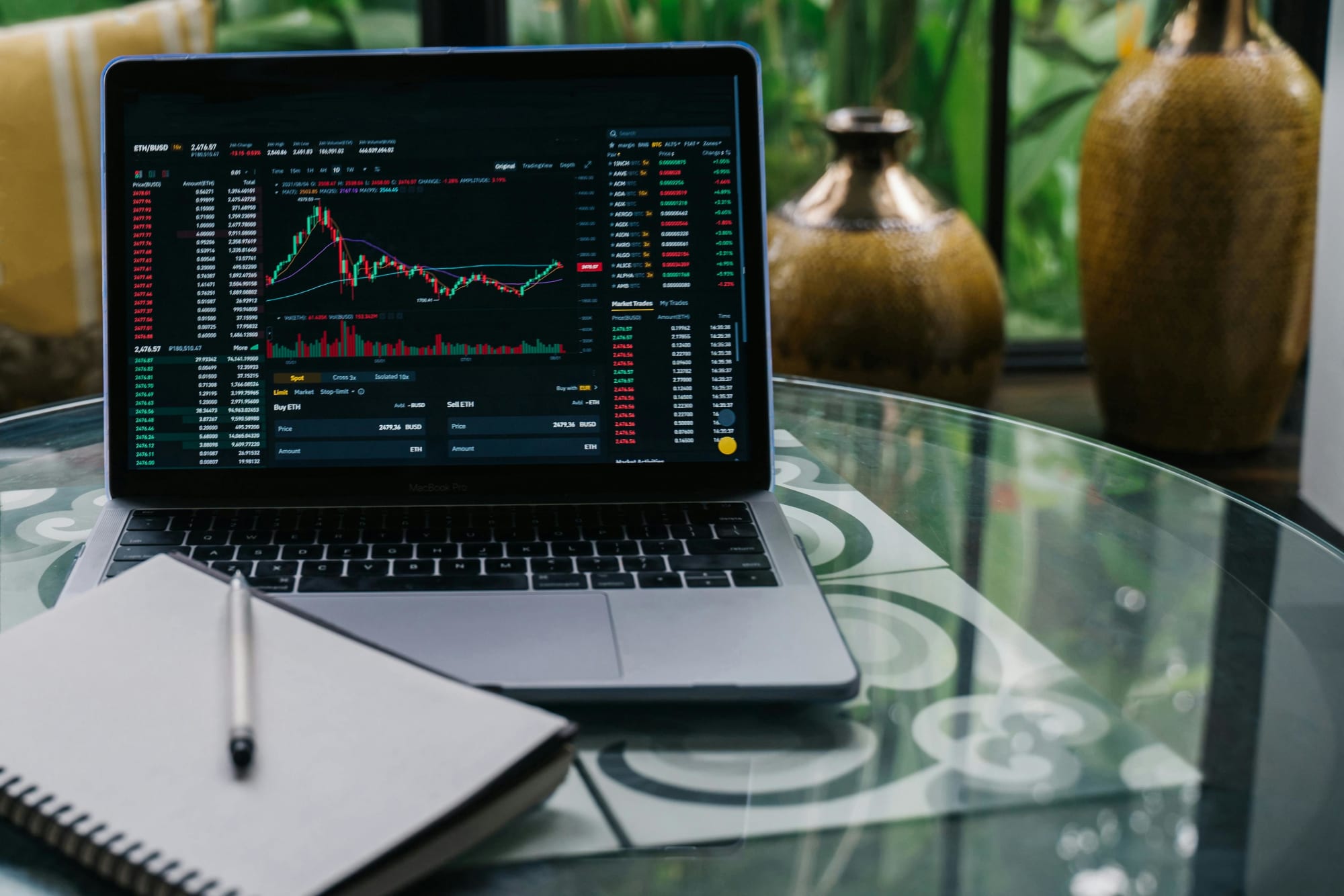Retirement
Must-knows about ETF investing and superannuation
You might have heard that ETFs can be a good way to ensure diversification among your investments, but what even is an ‘exchange-traded fund’, and how do you know if it’s right for you?
Must-knows about ETF investing and superannuation
You might have heard that ETFs can be a good way to ensure diversification among your investments, but what even is an ‘exchange-traded fund’, and how do you know if it’s right for you?

What is an ETF?
In a nutshell, an ETF is a basket of multiple assets bundled together in one fund. Such bonds or stocks track the performance of a particular index or asset, such as gold, the US dollar, government bonds, commodity futures etc.
The most common form of ETF, passive ETFs, are not designed to attempt to outperform the market, but instead will go up or down in value dependent on the index they’re tracking. In this way, if you’ve ever traded a single stock, purchasing or selling an ETF will be familiar to you.
However, unlike in the buying of individual shares, investors in ETFs do not own the assets in the fund. Instead, they own a share of the fund’s performance, which is dictated by the assets. As such, the performance of the assets directs the overall performance of the fund.

How do I profit?
Any dividends or payouts that come from the ETFs assets are divided out between the fund’s investors. As well as this, the trading of ETFs on major stock exchanges means that, like an average stock, you can profit from the capital gains delivered when the fund is traded.
So, why an ETF?
As we’ve heard all too many times, a properly diversified portfolio encompasses multiple asset types, not just multiple industries.
Funds offer a means of exposure to a multitude of assets, most often as selected and grouped by an investment expert. Therefore, a well-curated ETF will encompass a range of assets that operate counter-cyclically to one another, ensuring that when one falls another is profiting.
This means an ETF investor is less likely to experience the significant losses sole exposure to individual stocks and bonds can sometimes result in. This is because the fluctuating price of a single asset cannot pull down a single fund or yield incredible profits.
The other major benefit of an ETF is that it has the same liquidity as a common stock or bond. This sets it apart from a mutual fund, as the fund can be traded on an exchange in real time, with real-time prices.
Lastly, ETFs can often be cost-effective investment types as they typically do not need a fund manager. This is due to them tracking an index, not trying to beat it, and means they can sometimes be more than half the cost of other investment types that charge fund manager commissions or trading fees.
ETFs and SMSFs
“They often say that ETFs and SMSFs are a match made in heaven as both are, in many ways, designed to reach the same goals,” Ilan Israelstam, head of strategy at BetaShares, told Nest Egg.
“One of the big issues with SMSFs is that they are often overweight to only a couple of shares, like the big banks or the miners. The thing about an ETF is with a single trade you can get exposure to a whole portfolio of either Australian or global shares. From the perspective of your work, you’re only adding one more exposure to your portfolio, but you’re getting access to a whole range of shares.”
He offered a few helpful tips for SMSF members looking to diversify their exposure through ETFs.
- Know what you want to invest in
Mr Israelstam said it is important at the beginning of your ETF journey to limit your scope to a particular sector or index, so that you can better assess the funds on offer.
- Look for well-known and reputable issuers
He urged SMSF members to look for fund managers or groups that are established and have proven success in operating ETFs.
- Ensure you understand the strategy of the ETF
Before signing on the dotted line, Mr Israelstam asserted the need for SMSF members to fully understand the methodology behind an ETF. Does it simply track an index, or is there more to it?
- Look for hidden costs
As well as checking the fees associated with the ETF, he said interested investors should investigate whether the fund has any other, less apparent costs. This could be in the form of a bid and ask spread, which is essentially the difference in price between the buy and sell of an asset on the market. He recommends SMSF members thoroughly check to make sure such costs aren’t excessive.
- Look for income
According to Mr Israelstam, there are a number of ETFs that are actually designed for SMSF members and are particularly focused on delivering income through dividends and franking credits.

Self managed super fund
Financial progress hinges on ambition, not income, says Stake Report
Australia faces a financial turning point, with new research from online investment platform Stake revealing a nation divided into two distinct groups: the 'Starters', who invest and feel in control ...Read more

Self managed super fund
OKX targets Australia's $1 trillion SMSF market with new crypto platform launch
In a significant move aimed at capitalising on Australia's burgeoning digital asset market, global onchain technology company OKX has unveiled a new Self-Managed Super Fund (SMSF) expansion on its ...Read more

Self managed super fund
Industry leaders launch SMSF Innovation Council to drive digital transformation
A consortium of finance industry leaders has launched an SMSF Innovation Council to help Australia's $1.02 trillion self-managed superannuation fund industry navigate digital transformation. Read more

Self managed super fund
Superannuation guarantee to be paid on government paid parental leave, says ASFA
The Association of Superannuation Funds of Australia (ASFA) has hailed the government's decision to include Superannuation Guarantee payments with its Paid Parental Leave policy as a critical step ...Read more

Self managed super fund
SMSF experts advise against hasty reactions to potential super tax changes
As the Australian Government proposes a new tax measure on superannuation earnings for balances exceeding $3 million, experts from the self-managed super funds (SMSF) sector are urging members not to ...Read more

Self managed super fund
Federal government announces changes to superannuation contribution caps
The Federal Government has announced changes to the superannuation contribution caps, impacting self-managed super funds (SMSFs) and their members from 1 July 2024. Read more

Self managed super fund
SMSF Association calls for joint effort to tackle early super access
The SMSF Association is calling on a collaborative approach including the Government, the Australian Taxation Office (ATO), the Australian Securities and Investments Commission (ASIC), and the ...Read more

Self managed super fund
Rest Super members file class action over alleged insurance premium deductions
Shine Lawyers has initiated a class action lawsuit against Rest Superannuation (Rest), alleging the unlawful deduction of income protection insurance premiums from members' superannuation accounts. Read more

Self managed super fund
Financial progress hinges on ambition, not income, says Stake Report
Australia faces a financial turning point, with new research from online investment platform Stake revealing a nation divided into two distinct groups: the 'Starters', who invest and feel in control ...Read more

Self managed super fund
OKX targets Australia's $1 trillion SMSF market with new crypto platform launch
In a significant move aimed at capitalising on Australia's burgeoning digital asset market, global onchain technology company OKX has unveiled a new Self-Managed Super Fund (SMSF) expansion on its ...Read more

Self managed super fund
Industry leaders launch SMSF Innovation Council to drive digital transformation
A consortium of finance industry leaders has launched an SMSF Innovation Council to help Australia's $1.02 trillion self-managed superannuation fund industry navigate digital transformation. Read more

Self managed super fund
Superannuation guarantee to be paid on government paid parental leave, says ASFA
The Association of Superannuation Funds of Australia (ASFA) has hailed the government's decision to include Superannuation Guarantee payments with its Paid Parental Leave policy as a critical step ...Read more

Self managed super fund
SMSF experts advise against hasty reactions to potential super tax changes
As the Australian Government proposes a new tax measure on superannuation earnings for balances exceeding $3 million, experts from the self-managed super funds (SMSF) sector are urging members not to ...Read more

Self managed super fund
Federal government announces changes to superannuation contribution caps
The Federal Government has announced changes to the superannuation contribution caps, impacting self-managed super funds (SMSFs) and their members from 1 July 2024. Read more

Self managed super fund
SMSF Association calls for joint effort to tackle early super access
The SMSF Association is calling on a collaborative approach including the Government, the Australian Taxation Office (ATO), the Australian Securities and Investments Commission (ASIC), and the ...Read more

Self managed super fund
Rest Super members file class action over alleged insurance premium deductions
Shine Lawyers has initiated a class action lawsuit against Rest Superannuation (Rest), alleging the unlawful deduction of income protection insurance premiums from members' superannuation accounts. Read more








